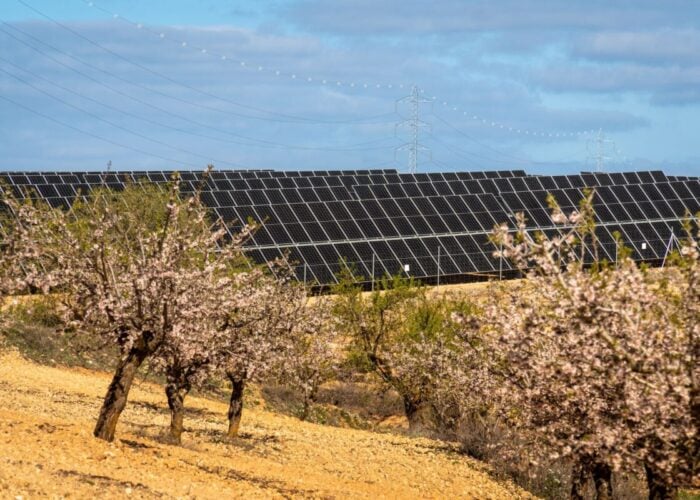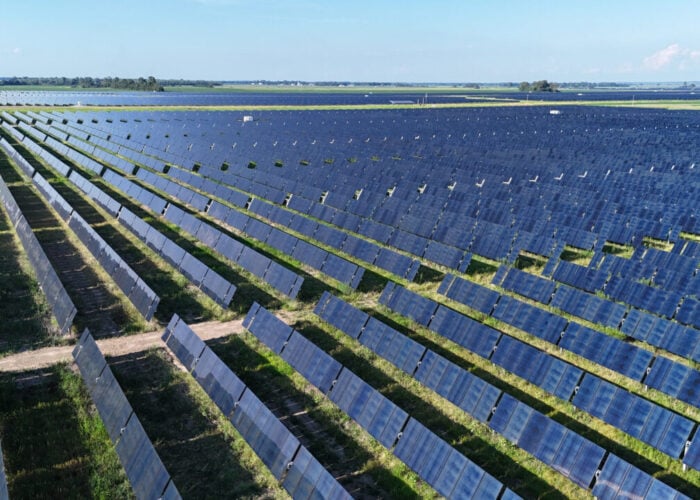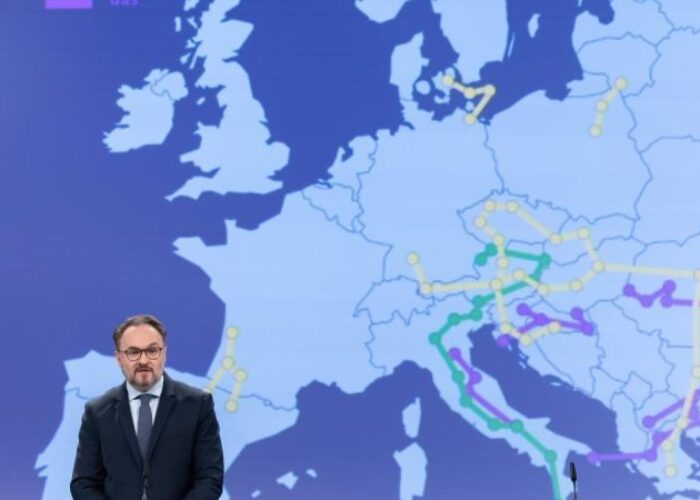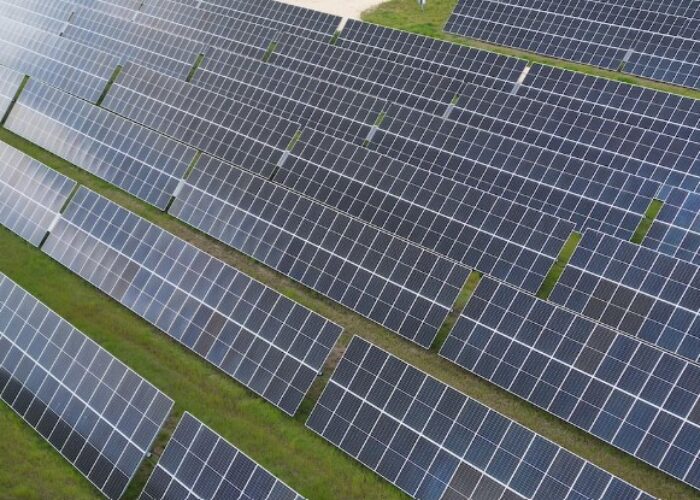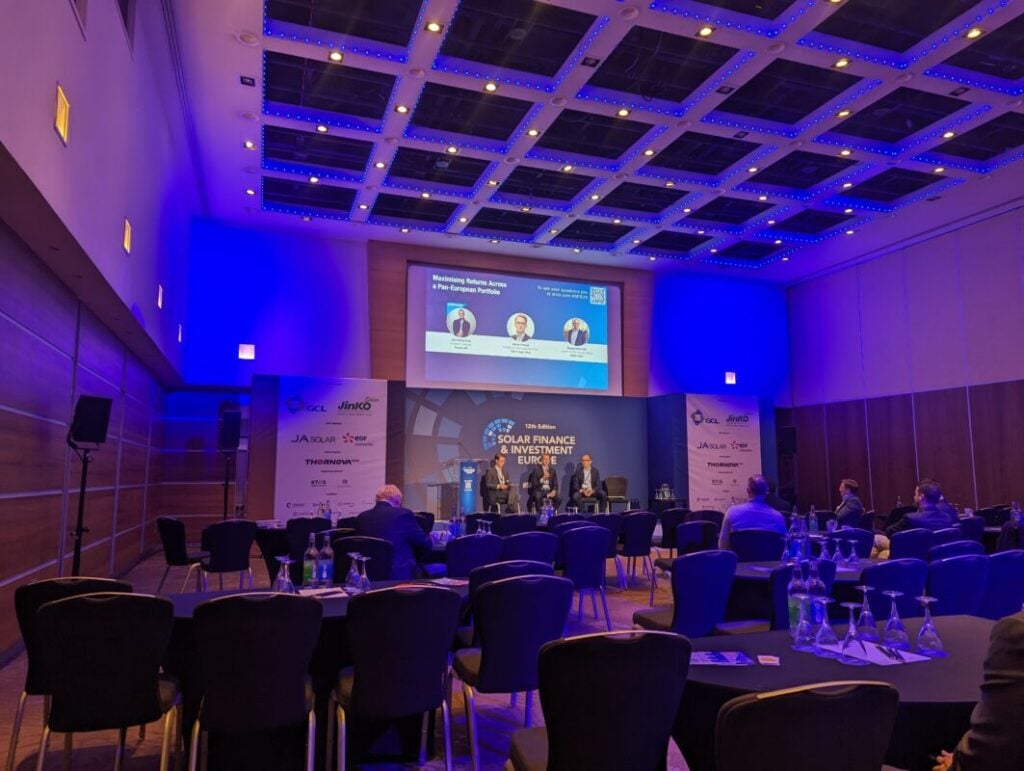
Investments in pan-European solar portfolios have become ‘narrow and deep’ rather than ‘broad and shallow’, as developers look to grow their expertise in a narrower range of markets.
This was a key conclusion drawn from a panel on pan-European portfolios at Solar Media’s Solar Finance & Investment Europe event, which continued today in London. The panel’s moderator, Jan-Phillip Kock of independent power producer (IPP) Encavis AG surmised this sentiment neatly, saying that: “there is an increasing trend of people going vertical rather than horizontal, which two years ago people may not have expected.”
Try Premium for just $1
- Full premium access for the first month at only $1
- Converts to an annual rate after 30 days unless cancelled
- Cancel anytime during the trial period
Premium Benefits
- Expert industry analysis and interviews
- Digital access to PV Tech Power journal
- Exclusive event discounts
Or get the full Premium subscription right away
Or continue reading this article for free
“We’ve kept the footprint relatively small, and we did this on purpose,” agreed Adrien Pinsard, founder and CEO of the Telis Energy Group, a renewable energy developer active in Europe’s four largest power markets, Germany, France, Italy and the UK, who described his company’s work as a “very decentralised approach to development”.
“We wanted to have some scale – it was important that there was scale – but we set up the platform organically,” continued Pinsard, suggesting that making the most of this organic growth is a priority for solar project owners. “We want to have a strong infrastructure … we want that [local] team to be led by someone with a high profile, good experience and a good track record. All of that is an investment … if you do set up that infrastructure you want to maximise what you can do with that team.”
“We’ve kept all our assets – right now we’re selling them off in some countries – and we’re focusing on fewer markets,” added Nikolaj Holtet Hoff, founder and CEO of IPP Nordic Solar.
Hoff and Pensard were in agreement about this trend towards more narrow and deep portfolios; when Kock asked them if there were examples of companies looking for more broad and shallow portfolios, both laughed and shook their heads.
Hoff noted, however, that too narrow a portfolio can be a disadvantage, saying there is a “much higher risk” involved in being active in just a single country, suggesting that a balance must be struck between working in a number of markets, but not stretching one’s portfolio too far.
New ways of working
Pinsard referred to a “slightly depressed” market environment in European solar, which has cooled appetite for large-scale solar installations. However, Hoff said that rather than this being an obstacle for an IPP, it could be an opportunity to work in new and more sophisticated manners when completing project development.
“We started focusing on fewer markets on the development side,” said Hoff. “We have co-development agreements in some countries, where were don’t actually have our own people. We actually have some pipelines, and there are attractive projects, in these countries, but you need to be picky.
“The focus has shifted a little bit, but [we’re] focusing on markets where we think we can have 500MW operational in a couple of years.”
This discussion follows on from a panel yesterday, at which speakers discussed the potential for more complex and sophisticated financing mechanisms, such as securitisation and green bonds, and the potential for these mechanisms to help deliver returns in the current European power market.
Maximising solar and storage
The speakers also suggested that a greater diversification of portfolios, particularly across technologies such as solar and storage, is a priority for maximising returns from a portfolio that spans several markets. This echoed discussions held yesterday about the role of diversification.
Pinsard pointed to his company’s work in Germany as an example of the benefits of diversification; by investing in solar and storage projects, Telis’ German portfolio has continued to be profitable despite changes in the country’s respective solar and storage markets.
“When we started with Germany, the obvious thing to do was PV,” said Pinsard. “That’s still part of what we do, for sure, but the sentiment around PV has changed in Germany [with] negative power prices, cannibalisation and the debate around what the next government wants to do with PV. We still think there are good opportunities in the PV space, but that has changed the landscape.
“At the same time, I think the environment for battery energy storage systems (BESS) is improving in some ways, because of the mirror effect to what is happening for PV: an increased duck curve, higher spreads and the fact that there is residential development, but there is very little utility-scale BESS.”
He said that he found the fact that there was less than 2GW of BESS in operation in Germany “staggering”, and that there is significant potential for growth in this sector, which has influenced Telis’ work in the country.
“We’re spending more time on BESS than we perhaps anticipated [and] that’s how we maximise our team.”
Solar Media is hosting its annual Solar Finance & Investment Europe event in London on 4 – 5 February 2025. This event annually attracts infrastructure funds, institutional investors, asset managers, banks and development platforms at the forefront of European renewables; the vast majority of which are responsible for billions in active and prospective investments in the Europe’s energy transition. For more details, visit the website.


